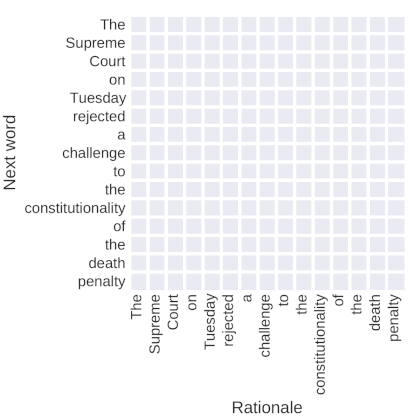Rationales for Sequential Predictions
Sequence models are a critical component of modern NLP systems, but their predictions are difficult to explain. We consider model explanations though rationales, subsets of context that can explain individual model predictions. We find sequential rationales by solving a combinatorial optimization: the best rationale is the smallest subset of input tokens that would predict the same output as the full sequence. Enumerating all subsets is intractable, so we propose an efficient greedy algorithm to approximate this objective. The algorithm, which is called greedy rationalization, applies to any model. For this approach to be effective, the model should form compatible conditional distributions when making predictions on incomplete subsets of the context. This condition can be enforced with a short fine-tuning step. We study greedy rationalization on language modeling and machine translation. Compared to existing baselines, greedy rationalization is best at optimizing the combinatorial objective and provides the most faithful rationales. On a new dataset of annotated sequential rationales, greedy rationales are most similar to human rationales.
PDF Abstract EMNLP 2021 PDF EMNLP 2021 Abstract





 LAMBADA
LAMBADA